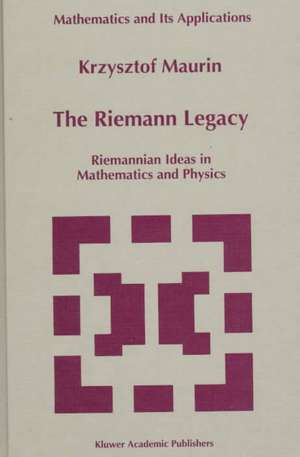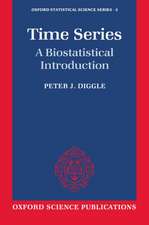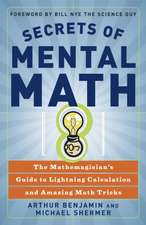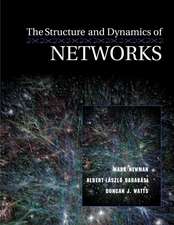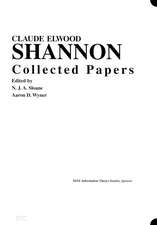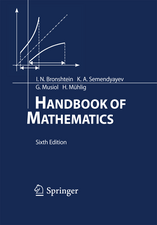The Riemann Legacy: Riemannian Ideas in Mathematics and Physics: Mathematics and Its Applications, cartea 417
Autor Krzysztof Maurinen Limba Engleză Hardback – 31 iul 1997
| Toate formatele și edițiile | Preț | Express |
|---|---|---|
| Paperback (1) | 656.71 lei 6-8 săpt. | |
| SPRINGER NETHERLANDS – 6 dec 2010 | 656.71 lei 6-8 săpt. | |
| Hardback (1) | 663.61 lei 6-8 săpt. | |
| SPRINGER NETHERLANDS – 31 iul 1997 | 663.61 lei 6-8 săpt. |
Din seria Mathematics and Its Applications
- 9%
 Preț: 627.25 lei
Preț: 627.25 lei - 18%
 Preț: 945.62 lei
Preț: 945.62 lei - 15%
 Preț: 648.42 lei
Preț: 648.42 lei - 15%
 Preț: 651.99 lei
Preț: 651.99 lei - 15%
 Preț: 591.61 lei
Preț: 591.61 lei -
 Preț: 394.29 lei
Preț: 394.29 lei - 18%
 Preț: 950.17 lei
Preț: 950.17 lei - 15%
 Preț: 586.85 lei
Preț: 586.85 lei - 5%
 Preț: 655.17 lei
Preț: 655.17 lei - 15%
 Preț: 658.70 lei
Preț: 658.70 lei - 15%
 Preț: 648.56 lei
Preț: 648.56 lei - 15%
 Preț: 604.84 lei
Preț: 604.84 lei -
 Preț: 394.87 lei
Preț: 394.87 lei - 15%
 Preț: 651.84 lei
Preț: 651.84 lei -
 Preț: 374.76 lei
Preț: 374.76 lei -
 Preț: 394.51 lei
Preț: 394.51 lei - 15%
 Preț: 706.30 lei
Preț: 706.30 lei -
 Preț: 391.02 lei
Preț: 391.02 lei -
 Preț: 389.70 lei
Preț: 389.70 lei - 15%
 Preț: 585.04 lei
Preț: 585.04 lei - 15%
 Preț: 653.98 lei
Preț: 653.98 lei - 15%
 Preț: 587.02 lei
Preț: 587.02 lei - 20%
 Preț: 577.43 lei
Preț: 577.43 lei -
 Preț: 395.47 lei
Preț: 395.47 lei - 15%
 Preț: 601.88 lei
Preț: 601.88 lei - 15%
 Preț: 594.53 lei
Preț: 594.53 lei - 15%
 Preț: 651.84 lei
Preț: 651.84 lei - 15%
 Preț: 649.06 lei
Preț: 649.06 lei -
 Preț: 392.21 lei
Preț: 392.21 lei - 15%
 Preț: 649.06 lei
Preț: 649.06 lei - 15%
 Preț: 643.48 lei
Preț: 643.48 lei -
 Preț: 389.49 lei
Preț: 389.49 lei
Preț: 663.61 lei
Preț vechi: 780.72 lei
-15% Nou
Puncte Express: 995
Preț estimativ în valută:
126.99€ • 135.79$ • 105.87£
126.99€ • 135.79$ • 105.87£
Carte tipărită la comandă
Livrare economică 18 aprilie-02 mai
Preluare comenzi: 021 569.72.76
Specificații
ISBN-13: 9780792346364
ISBN-10: 079234636X
Pagini: 719
Ilustrații: XXII, 719 p. 3 illus.
Dimensiuni: 155 x 235 x 40 mm
Greutate: 1.22 kg
Ediția:1997
Editura: SPRINGER NETHERLANDS
Colecția Springer
Seria Mathematics and Its Applications
Locul publicării:Dordrecht, Netherlands
ISBN-10: 079234636X
Pagini: 719
Ilustrații: XXII, 719 p. 3 illus.
Dimensiuni: 155 x 235 x 40 mm
Greutate: 1.22 kg
Ediția:1997
Editura: SPRINGER NETHERLANDS
Colecția Springer
Seria Mathematics and Its Applications
Locul publicării:Dordrecht, Netherlands
Public țintă
ResearchCuprins
I Riemannian Ideas in Mathematics and Physics.- 1 Gauss Inner Curvature of Surfaces.- 2 Sectional Curvature. Spaces of Constant Curvature. Weyl Hypothesis.- 3 Cohomology of Riemann spaces. Theorems of de Rham, Hodge, Kodaira.- 4 Chern—Gauss—Bonnet theorem.- 5 Curvature and Topology or Characteristic Forms of Chern, Pontriagin, and Euler.- 6 Kähler Spaces. Bergman Metrics. Harish-Chandra-Cartan Theorem. Siegel Space (once again!).- II General Structures of Mathematics.- 1 Differentiable Structures. Tangent Spaces. Vector Fields.- 2 Projective (Inverse) Limits of Topological Spaces.- 3 Inductive Limits. Presheaves. Covering Defined by Presheaf.- 4 Algebras. Groups, Tensors, Clifford, Grassmann, and Lie Algebras. Theorems of Bott—Milnor, Wedderburn, and Hurwitz.- 5 Fields and their Extensions.- 6 Galois Theory. Solvable Groups.- 7 Ruler and Compass Constructions. Cyclotomic Fields. Kronecker—Weber Theorem.- 8 Algebraic and Transcendental Elements.- 9 Weyl principle.- 10 Topology of Compact Lie Groups.- 11 Representations of Compact Lie Groups.- 12 Nilpotent, Semimple, and Solvable Lie Algebras.- 13 Reflections, Roots, and Weights. Coxeter and Weyl groups.- 14 Covariant Differentiation. Parallel Transport. Connections.- 15 Remarks on Rich Mathematical Structures of Simple Notions of Physics Based on Example of Analytical Mechanics.- 16 Tangent Bundle TM. Vector, Fiber, Tensor and Tensor Densities, and Associate Bundles.- 17 G-spaces. Group Representations.- 18 Principal and Associated Bundles.- 19 Induced Representations and Associated Bundles.- 20 Vector Bundles and Locally Free Sheaves.- 21 Axiom of Covering Homotopy.- 22 Serre Fibering. General Theory of Connection. Corollaries.- 23 Homology. Cohomology. de Rham Cohomology.- 24 Cohomology of Sheaves. Abstract deRham Theorem.- 25 Homotopy Group ?k(X, x0). Hopf Fibering. Serre Theorem on Exact Sequence of Homotopy Groups of a Fibering.- 26 Various Benefits of Characteristic Classes (Orientability, Spin Structures). Clifford Groups, Spin Group.- 27 Divisors and Line Bundles. Algebraic and Abelian Varieties.- 28 General Abelian Varieties and Theta Function.- 29 Theorems on Algebraic Dependence.- III The Idea of the Riemann Surface.- IV Riemann and Calculus of Variations.- 1 Introduction.- 2 The Plateau Problem.- 3 Teichmüller Theory. Riemann Moduli Problem.- 4 Riemannian Approach to Teichmiiller Theory. Harmonic Maps and Teichmüller Space.- 5 Teichmüller theory and Plateau—Douglas problem.- 6 Rescuing Riemann’s Dirichlet Principle. Potential Theory.- 7 The Royal Road to Calculus of Variations (Constantin Carathéodory).- 8 Symplectic and Contact Geometries. Conservation Laws.- 9 Direct Methods in Calculus of Variations for Manifolds with Isometries. Equivariant Sobolev Theorems. Yamabe Problem and its Relation to General Relativity.- V Riemann and Complex Geometry.- 1 Introduction.- 2 On Complex Analysis in Several Variables.- 3 Ellipticity, Runge Property, and Runge Type Theorems.- 4 Hörmander Method in Complex Analysis.- 5 Wirtinger Theorems. Metric Theory of Analytic Sets.- 6 The Problem of Poincaré and the Cousin Problems.- 7 Ringed Spaces and General Complex Spaces.- 8 Construction of Complex Spaces by Gluing and by Taking Quotient.- 9 Differential Geometry of Holomorphic Vector Bundles over Compact Riemann Surfaces and Kähler manifolds. Stable Vector Bundles, Hermite-Einstein Connections, and their Moduli Spaces.- VI Riemann and Number Theory.- 1 Introduction.- 2 The Riemann ? function.- 3 Hecke Theory.- 4 Dedekind ?K function for number field K and Selberg ?function.- Concluding Remarks.- Suggestions for Further Reading.
